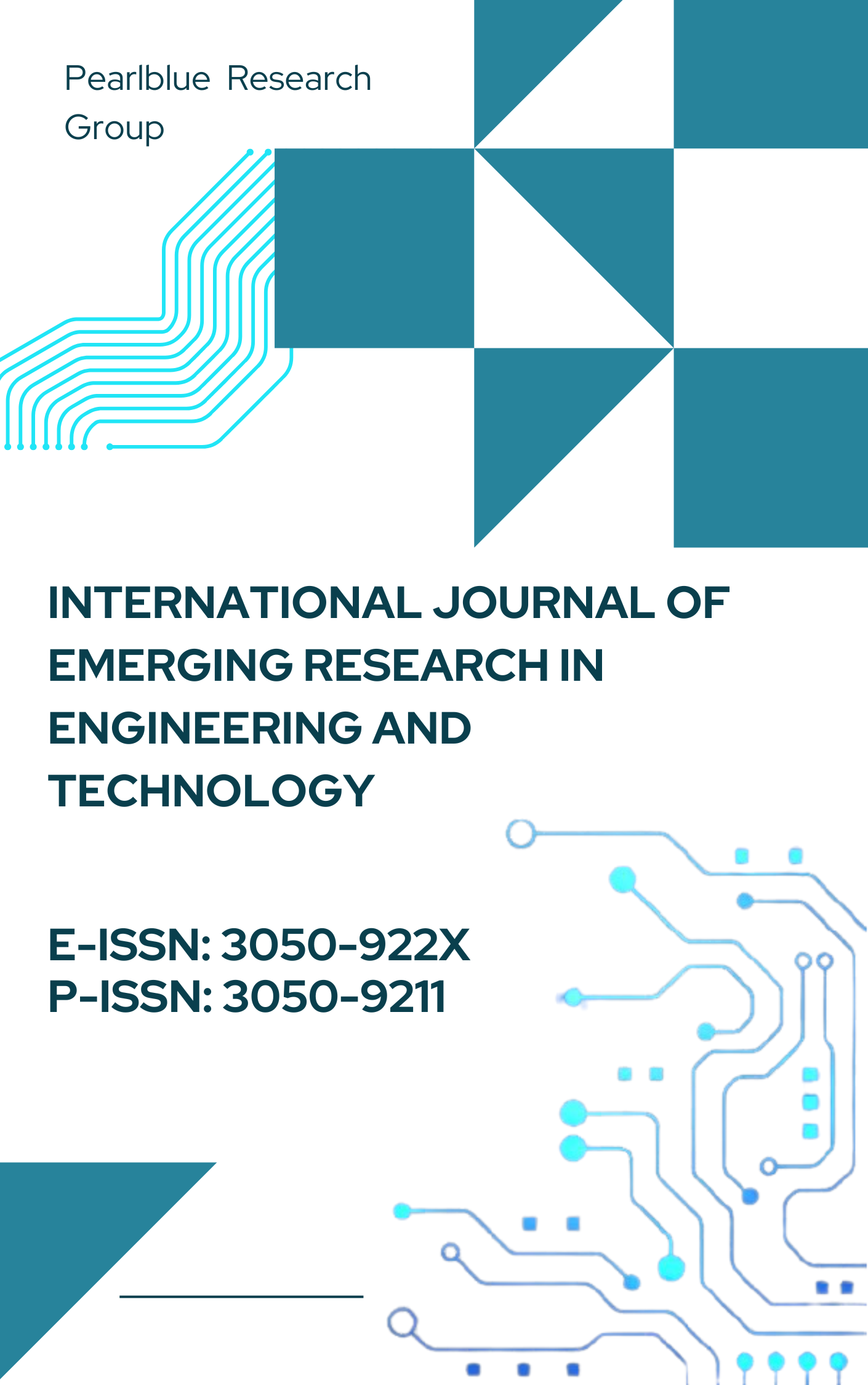Cybersecurity Through AI-Powered, Distributed Intrusion Detection And Prevention Systems
DOI:
https://doi.org/10.63282/3050-922X.IJERET-V6I3P114Keywords:
Intrusion Detection System (IDS), Artificial Intelligence (AI), Machine Learning, Federated Learning (FL), Distributed Systems, Cybersecurity, Anomaly Detection, Adversarial AttacksAbstract
The growing sophistication of zero-day attacks has rendered traditional Intrusion Detection and Prevention Systems (IDPS) almost ineffective in enterprise networks. In this paper, we explore the transition to AI-based distributed IDPS, focusing particularly on Federated Learning (FL) as a core architecture. This approach provides enhanced, adaptive threat detection with built-in privacy protections. However, implementing this method in practice presents several challenges. This work addresses three key issues: the balance between scalability and computational overhead, privacy concerns in FL, and the vulnerability of AI to adversarial attacks. We incorporate cutting-edge solutions and draw on real-world examples to argue that only a multi-layered strategy combining architectural, cryptographic, and model-hardening measures can fully unlock the potential of these next-generation security systems
References
[1] M. A. Ferrag, O. Friha, D. Hamouda, L. Maglaras, and H. Janicke, "Federated learning for cyber security: A comprehensive survey," IEEE Transactions on Neural Networks and Learning Systems [Online]. Available: https://arxiv.org/pdf/2108.00974
[2] Y. Li, Y. Chen, N. Li, and W. Lou, "A survey of privacy-preserving federated learning," ACM Computing Surveys, vol. 54, no. 6, pp. 1-36, 2021. [Online]. Available: https://scispace.com/pdf/a-survey-of-secure-computation-using-trusted-execution-2iwby4n5.pdf
[3] Belenguer, Aitor & Navaridas, Javier & Pascual Saiz, Jose Antonio. (2022). A review of Federated Learning in Intrusion Detection Systems for IoT. 10.48550/arXiv.2204.12443.
[4] Guembe, B., Misra, S., & Azeta, A. (2024). Privacy Issues, Attacks, Countermeasures and Open Problems in Federated Learning: A Survey. Applied Artificial Intelligence, 38(1). https://doi.org/10.1080/08839514.2024.2410504
[5] Tarrah R. Glass-Vanderlan, Michael D. Iannacone, Maria S. Vincent, Qian (Guenevere) Chen, and Robert A. Bridges. 2018. A Survey of Intrusion Detection Systems Leveraging Host Data. ACM Comput. Surv. 9, 4, Article 39 (March 2018), 39 pages. Available: https://www.osti.gov/servlets/purl/1965280
[6] Liang, Warren. (2023). Adversarial Attacks and Defense Mechanisms in AI-Based IDS for V2X. Available: https://www.researchgate.net/publication/389089055_Adversarial_Attacks_and_Defense_Mechanisms_in_AI-Based_IDS_for_V2X
[7] Albulayhi, K., Smadi, A. A., Sheldon, F. T., & Abercrombie, R. K. (2021). IoT Intrusion Detection Taxonomy, Reference Architecture, and Analyses. Sensors, 21(19), 6432. https://doi.org/10.3390/s21196432
[8] H. B. McMahan, E. Moore, D. Ramage, S. Hampson, and B. A. y Arcas, "Communication-Efficient Learning of Deep Networks from Decentralized Data," in Proceedings of the 20th International Conference on Artificial Intelligence and Statistics (AISTATS), 2017. [Online]. Available: https://arxiv.org/abs/1602.05629
[9] Sowmya, T. & e a, Mary. (2023). A comprehensive review of AI based intrusion detection system. Measurement: Sensors. 28. 100827. 10.1016/j.measen.2023.100827.
[10] M. Z. Alom, T. Taha, C. Yakopcic, S. Westberg, P. Sidike, M. S. Nasrin, B. C. Van Esesn, A. A. S. Awwal, and V. K. Asari, "A State-of-the-Art Survey on Deep Learning Theory and Architectures," Electronics, vol. 8, no. 3, p. 292, 2019. [Online]. Available: https://www.mdpi.com/2079-9292/8/3/292
[11] S. Agrawal, S. Sarkar, et al., "Federated Learning for Intrusion Detection System: Concepts, Challenges and Future Directions," Computer Communications, vol. 160, pp. 415-425, 2021. [Online]. Available: https://www.semanticscholar.org/paper/Federated-Learning-for-Intrusion-Detection-System%3A-Agrawal-Sarkar/91b0acc50ff0b115ed4ce4010d0a471dac95d537
[12] L. N. R. Mudunuri, V. M. Aragani, and P. K. Maroju, "Enhancing Cybersecurity in Banking: Best Practices and Solutions for Securing the Digital Supply Chain," Journal of Computational Analysis and Applications, vol. 33, no. 8, pp. 929-936, Sep. 2024.



